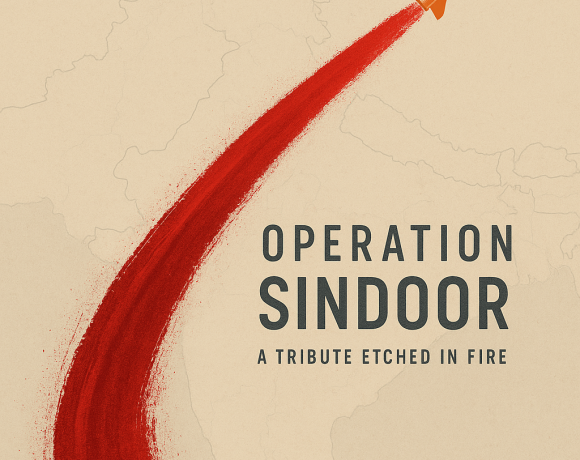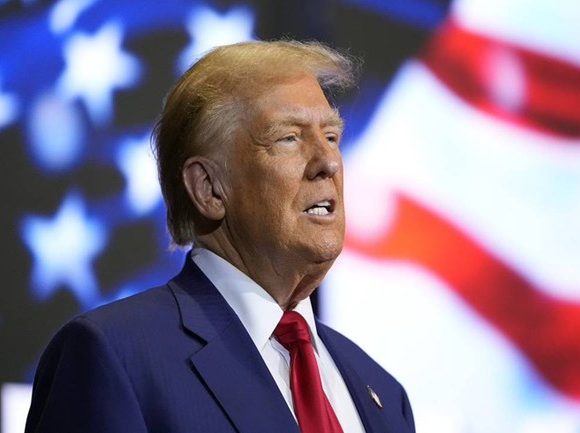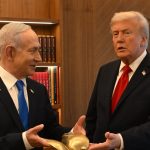
With the West in Decline and China Distrusted, India, France, Japan, and Australia Must Step Up
As the world drifts deeper into geopolitical fragmentation, it’s becoming painfully clear that the post-Cold War order is crumbling. The so-called liberal West, long seen as the steward of global norms, is retreating into protectionism, internal discord, and credibility deficits. On the other side, China’s authoritarian ambition, veiled under the Belt and Road rhetoric, is now openly distrusted by much of the Global South for its debt diplomacy, opaque intentions, and surveillance-driven governance model. Stuck between these two unreliable poles, the rest of the world is left to navigate a global system that is neither fair nor functional.
It is in this vacuum of trust, leadership, and cooperation that a new coalition must rise — not one forged by ideology or military alliances, but by shared pragmatism, regional legitimacy, and the will to build rather than dominate. And if such a coalition is to be formed, it must be anchored by four capable and credible nations: India, France, Japan, and Australia. These countries bring with them not just military and economic strength, but more importantly, a deeply rooted instinct for multilateralism, rule-based order, and strategic autonomy.
The time for hedging is over. The time to lead — wisely, cooperatively, and inclusively — has come.
The Coalition of the Capable: Who’s In It
At the heart of this emerging bloc stand four nations that have the geographic reach, diplomatic maturity, and institutional capacity to drive a new kind of international partnership: India, France, Japan, and Australia. What sets them apart is not imperial memory or great power nostalgia, but their unique combination of regional influence and global responsibility — and a growing fatigue with being spectators in a game dominated by the United States and China.
India, with its demographic weight, expanding economy, and assertive yet independent foreign policy, is increasingly seen as a balancing force in Asia and a legitimate voice of the Global South. It has the credibility to speak to both developing and developed nations — and the ambition to reshape global governance rather than merely adapt to it.
France, unlike its transatlantic peers, maintains a distinct worldview rooted in strategic autonomy. Its military presence in the Indo-Pacific, commitment to climate diplomacy, and leadership in Africa and the EU position it as a European power willing to chart its own course.
Japan, the world’s third-largest economy, has quietly evolved into a diplomatic powerhouse. Its postwar pacifist constitution has not prevented it from becoming a leader in development aid, digital infrastructure, and maritime security. Tokyo understands that a rules-based order is not just desirable — it’s essential to its survival.
Australia, often underestimated, brings to the table an agile and resource-rich economy, a strong military alliance network, and a deep investment in Indo-Pacific stability. It is uniquely placed to connect Pacific Island nations with the broader vision of an inclusive coalition.
But these four cannot do it alone. A truly effective bloc must go beyond regional anchors and include Brazil, South Africa, Indonesia, Egypt, UAE, and New Zealand — nations with complementary strengths, strategic locations, and a shared disillusionment with existing global fault lines.
This coalition of the capable is not meant to replace existing institutions, but to revive the lost art of cooperation. It is not an alliance of convenience, but a partnership of purpose — born out of necessity, built on balance, and driven by a mutual respect for sovereignty and sustainable development.
What They Bring to the Table
What makes this coalition more than just an idealistic club of well-intentioned nations is the real, tangible value each member contributes — in economy, geography, diplomacy, innovation, and stability. This is not a bloc of uniformity; it is one of complementarity. Together, they form a global mosaic of capabilities that the current bipolar world simply cannot replicate.
Economic Complementarity is one of the bloc’s greatest strengths. Nations like India, Indonesia, Brazil, and South Africa offer large consumer markets, labor pools, and industrial ambition. Meanwhile, France, Japan, and Australia bring technological sophistication, capital investment potential, and manufacturing excellence. UAE and Egypt offer critical energy resources, logistics hubs, and connectivity to African and Arab markets. New Zealand contributes high-end agriculture, environmental leadership, and digital governance expertise.
This group could reroute and redesign global trade corridors, freeing global supply chains from their unhealthy dependence on China. Imagine semiconductors developed jointly by Japan and India, critical minerals refined in Australia, and final assembly done in Brazil or South Africa. This is not just diversification — it’s democratization of the global economy.
Geographically, the group spans every major ocean and trade route. India and Indonesia dominate the Indian Ocean chokepoints. France — via its overseas territories — is present in the Caribbean, the Pacific, and the Indian Ocean. Japan and Australia secure the Western Pacific. Egypt controls the Suez Canal. UAE commands Gulf energy routes. Brazil and South Africa straddle the Atlantic. This is maritime security without gunboat diplomacy — a peaceful deterrent through presence and cooperation.
Diplomatically, these countries are already embedded in key multilateral networks — from G20 and BRICS to ASEAN, IORA, AU, and QUAD. They are well-versed in consensus-building and understand the value of soft power. Unlike authoritarian blocs, this coalition doesn’t need to impose — it persuades.
And most importantly, they offer stability. These are not revisionist states looking to rewrite borders or settle historical scores. They are committed to internal development, regional peace, and long-term partnerships. The world needs such anchors now more than ever.
If they choose to act together, these ten nations could become the coalition that guarantees global continuity while others play at global confrontation.
Why Now: The Global Opportunity
The global landscape today is marked by a rare convergence of crises and clarity — making this the perfect moment for India, France, Japan, Australia, and their partners to step up. The old order is visibly faltering, yet no new credible alternative has emerged. This vacuum has not just created space for a new alliance — it has created demand.
The United States, once the self-proclaimed guardian of liberal internationalism, is increasingly inward-looking, polarized, and unreliable. Its foreign policy swings violently between interventionism and isolationism depending on the party in power. Allies are weary. Institutions like the WTO, UN, and WHO are either paralysed or politicized. For the rest of the world, Washington’s promises now come with an expiry date — usually ending at the next election.
China, on the other hand, has tried to market itself as the new global leader, but its aggressive expansionism, opaque political system, and punitive economic diplomacy have eroded its credibility. The Belt and Road Initiative has become synonymous with unsustainable debt and environmental harm. Even countries once eager for Chinese investment are now backing away — burned by the hidden costs of Beijing’s chequebook diplomacy.
This creates a moment of profound strategic clarity: the world does not want another empire. It wants a network — a cooperative, rules-respecting, decentralized, multipolar framework where no one nation dictates the terms.
That’s where this coalition steps in.
- When climate finance fails, this bloc can step in with a Green Transition Fund driven by collective innovation.
- When vaccine inequity reappears, they can activate a South-South Health Grid with generic production and shared IP.
- When semiconductor supply chains collapse, this group can build a Resilient Tech Alliance avoiding overdependence on any single state.
- When shipping lanes are militarized, these nations can conduct joint maritime patrols that de-escalate, not provoke.
This isn’t about replacing the West or confronting China — it’s about rebalancing the system so it no longer tips in favor of the loudest, richest, or most militarized power.
And if this opportunity is not seized now, it may be lost to a future of hardened blocs, fractured markets, and endless proxy conflicts.
From Vision to Action: What This Bloc Can Do
For this coalition to move from idea to impact, it must be more than a talking shop or photo-op summit club. It must deliver concrete initiatives rooted in shared needs, mutual respect, and strategic foresight. The goal isn’t to mimic NATO or BRICS or the G7 — it’s to pioneer a new kind of bloc: a development-driven, cooperation-first, non-aligned alliance built for the challenges of the 21st century.
Here’s what this coalition — led by India, France, Japan, and Australia and supported by Brazil, South Africa, Indonesia, Egypt, UAE, and New Zealand — can start doing today:
1. Establish a Global Infrastructure and Technology Bank (GITB)
Instead of competing with the China-led Belt and Road or the West’s scattered promises, this bloc can create its own multilateral development bank focused on climate-resilient infrastructure, digital connectivity, AI innovation, and sustainable urbanization. It would fund projects that align with local needs, not strategic leverage.
2. Create a Resilient Supply Chain Agreement
This bloc can form a semiconductor and rare-earth consortium, pooling the mining capacity of Australia, South Africa, and Brazil with Japan’s fabrication tech and India’s manufacturing base. A similar agreement can cover pharmaceuticals, food security, and green energy technologies.
3. Launch a South-South Startup and Innovation Network
An India-led digital framework, supported by Japanese capital, French research institutions, and Brazilian and African entrepreneurship, can create a startup accelerator across emerging economies. This network could sidestep Silicon Valley’s gatekeeping and China’s surveillance ecosystem.
4. Institutionalize Maritime Security and Environmental Patrols
Through joint naval exercises and satellite-based coastal surveillance, this bloc could guard key chokepoints — the Straits of Hormuz, Malacca, Mozambique Channel, and the South Pacific — ensuring open seas, disaster response readiness, and environmental protection.
5. Draft a Multilateral Charter for Strategic Autonomy
Rather than relying on outdated non-alignment rhetoric, this bloc could offer a bold diplomatic document: a New Compact for Sovereign Cooperation, emphasizing non-interference, inclusive trade, and institutional reform of the UN and Bretton Woods bodies.
6. Empower Education, Climate and Cultural Diplomacy
- A climate university consortium with cross-country faculty, research, and scholarships.
- Visa-free educational and research movement within the bloc.
- A shared digital culture archive promoting the heritage, languages, and indigenous knowledge systems of all ten nations.
This is not utopian. Many of these initiatives already exist in pieces — they only need to be scaled, synchronized, and politically committed to. And the biggest obstacle is not funding or feasibility. It’s the inertia of waiting for someone else to lead.
If Not Them, Then Who? If Not Now, Then When?
History rarely knocks twice. The world is standing at a crossroads — one path leads deeper into a fractured, adversarial future shaped by two increasingly unreliable superpowers. The other offers a chance to reset the terms of global cooperation, not by creating yet another pole of power, but by assembling a coalition of capable, credible, and committed nations who choose diplomacy over domination.
India, France, Japan, and Australia are not perfect nations. But they have what the moment demands: economic strength without coercion, military power without imperialism, and diplomatic maturity without hypocrisy. Together with Brazil, South Africa, Indonesia, Egypt, the UAE, and New Zealand, they can do something no country or bloc has managed since the Cold War — offer a shared platform where power serves peace, and ambition aligns with equity.
They don’t need permission from Washington or Beijing. They don’t need to wait for institutional blessings. What they need is political will, strategic imagination, and the courage to break free from the shadows of other nations’ rivalries.
The post-American world is already here. The China-centric alternative is mistrusted. That leaves the field open — and history calling.
If these ten nations don’t rise now to build a new bloc of balanced cooperation, someone else — or something worse — will fill the void.
And the world may not get another chance.


















